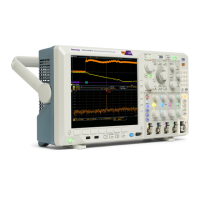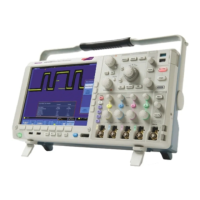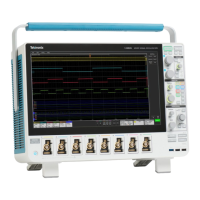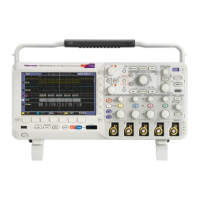Specifications
Table 1: Analog channel input and vertical specifications (cont.)
Characteristic Description
Delta Time
Measurement
Accuracy
The formula to calculate delta-time m easurement ac curacy (DTA) for a given instrument setting and input
signal is given below (assumes insignificant signal content above N yquist)
SR
1
=SlewRate(1
st
Edge) around 1
st
point in measurement
SR
2
=SlewRate(2
nd
Edge) around 2
nd
point in measurement
N = input-referred noise (volts
rms
, Refer to Random Noise, Sample Acquisition Mode)
TBA = timebase accuracy ( 5 ppm, R efer to Long-term sample rate and delay time accuracy)
t
reading
= delta-time m easurement duration (sec)
RecordDuration = (Record Length) / (Sample Rate)
Assumes that error due to aliasing is insignificant
The term under the square-root sign is the stability, and is due to TIE (Time Interval Error). The errors due
to this term occur throughout a single-shot measurement. The second term is due to both the absol
ute
center-frequency accuracy and the center-frequency stability of the time base and varies between multiple
single-shot measurements over the observation interval (the amount of time from the first single-shot
measurement to the final single-shot measurement).
1
For 50 Ω path, 1 V/div is the maximum vertical setting.
6 MSO4000 and DPO4000 Series Specifications and Performance Verification

